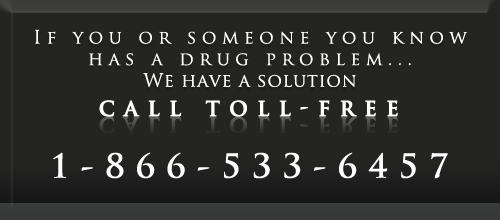Navigate

Illegal Drug Treatment

There are various types of illegal drug treatment options available. The difference between them can sometimes be great, though, they are all attempting to achieve the same result. The goal of any illegal drug treatment facility is to help individual achieve a drug free life and return them to being a productive member of society. But how do we know which treatment option is right? This is one of the questions that lays hard on the heart of a person searching for the right illegal drug treatment program. The ultimate goal of drug addiction treatment is to enable an individual to achieve lasting abstinence, but the immediate goals are to reduce illegal drug abuse, improve the recovering addict’s ability to function, and minimize the medical and social complications of drug abuse and addiction.
While getting sober from illegal drug is an important first step, it is only the beginning of the recovery process. Once sober, the brain needs time to recover and rebuild connections that have changed while addicted. In this period, depression and cravings to use can be intense and very hard to fight. Without support, relapse is very likely. Good illegal drug treatment helps you develop new coping skills to deal with stressful situations and other common triggers for relapse. Without these skills, stressful situations frequently result in relapse.
Most people attempt to do their best and make the most of the experience when they are in illegal drug treatment. Relapse commonly occurs when a person leaves a program without aspects of their life or other problems being fully handled. To have a program or drug rehab facility tell you that you failed because you didn't work the program, well, that is not the program you should try again. If this is the case, then you should really look at what illegal drug treatment options you have tried and find a treatment facility or program that handles all aspects of addiction.
There are many types of illegal drug treatment programs. When considering a program it is important to remember that everyone’s needs are different. In general, the longer and more intense the drug use, the longer and more intense the treatment you may need. Regardless of a program’s length in weeks or months, follow-through and long-term follow-up are crucial to recovery. A quality treatment program should address the fact that substance abuse often masks emotional pain and it needs to be addressed as treatment progresses.
An overview of illegal drug treatment options:
- Residential Illegal Drug Treatment
- Residential treatment involves living at a treatment facility while undergoing intensive treatment during the day. Residential treatment normally varies from 30-90 days.
Medical detoxification
Admission to this level of treatment requires an assessment, and is only the first step in illegal drug treatment. Sometimes medical detox is started from a trip to the emergency room due to overdose or drug related issues.
Partial hospitalization
This relapse prevention treatment program usually meets 3-5 days a week, 4-6 hours per day, and is for people who require medical monitoring on an outpatient basis.
Intensive Outpatient Program (IOP)
Usually meets 3 days a week and 2-4 hours per day. These relapse prevention illegal drug treatment programs are often scheduled around work or school.
Counseling (Individual, Group, Couple, or Family Therapy)
Works best in conjunction with other types of illegal drug treatment or as follow up support. Looking at your issues from a different perspective can help to identify the root cause of your drug usage and can be beneficial in helping you learn how to make more constructive choices in your life.
Alcoholics/Narcotics Anonymous
Alcoholics or Narcotics Anonymous meetings often referred to as AA or NA are informal meetings held in your local area. AA/NA has branches all over the country and in almost every city nationwide. These meeting are based on the twelve steps of recovery and many addicts and alcoholics have found free and effective help at these meetings. However, AA and NA are not "treatment." They are not supported by any medical professionals.
Sober living
This type of illegal drug treatment is normally done after more intensive rehabilitation such as residential treatment. Sober living facilities are useful if returning home too soon is a strong trigger for relapse or the recovering addict has no home. Sober living homes are comprised of recovering addicts who support each other, and provide an alcohol and drug free environment.
